This Is the Absolute Germiest Thing in Your Home, Study Says
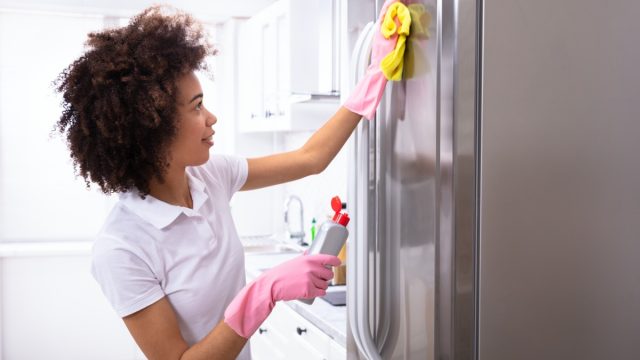
Whether you’re washing dishes until the wee hours of the morning or constantly vacuuming, it can often feel like you could clean forever and never get your home as spotless as you’d like. Unfortunately, even if you’re spending hours on end cleaning, there are countless areas and objects within your home that are still teeming with germs at the end of the day. So, where is all that bacteria lurking? Read on to discover the germiest areas in your home, ranked by amount of bacteria per area, and how to clean them. Warning: the grossest thing in your house might leave you appalled. And if you’re eager to get your space spotless, check out these 30 Amazing Cleaning Tips You’ll Wish You Knew Sooner.
17
Remote Control
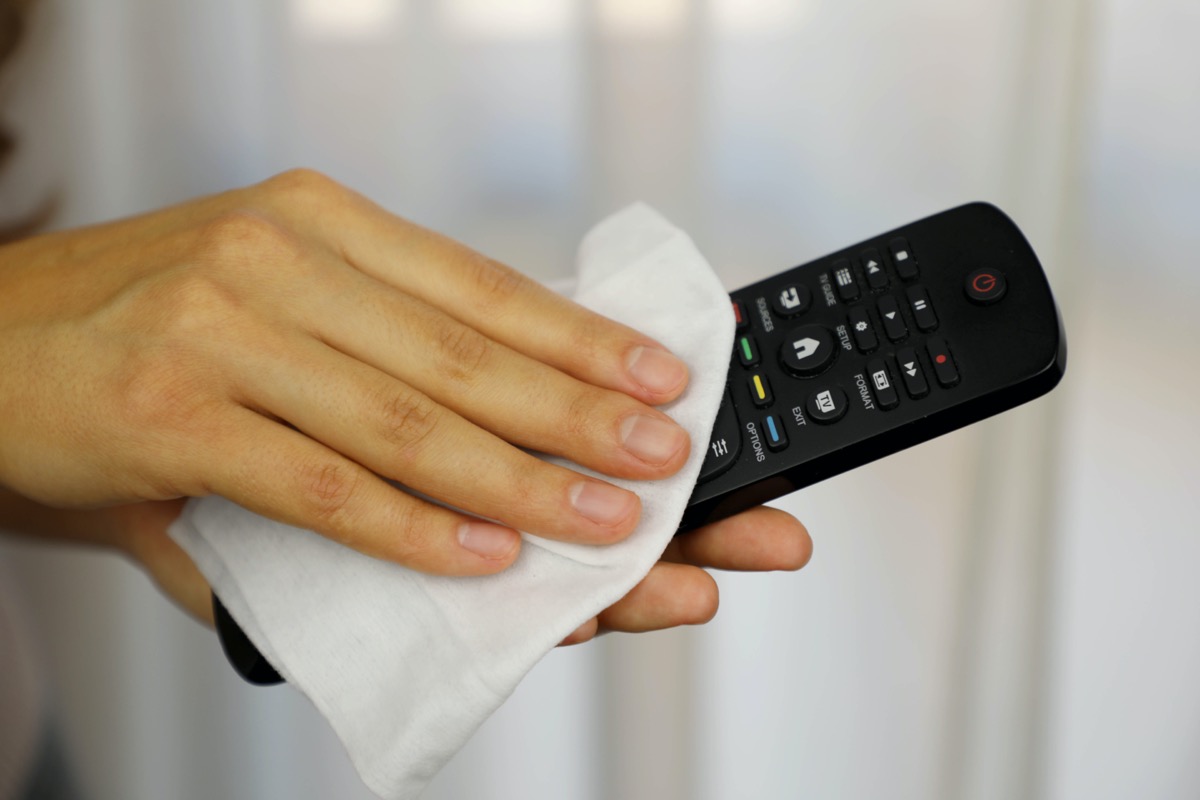
57 colony forming units (CFU) per 10 sq. cm
In 2011, NSF International conducted a study on household germs, looking at the homes of 22 families who volunteered for observation. When it came to remote controls, the researchers found yeast and mold on 55 percent of the controllers, staph on 14 percent, and coliform bacteria like E. coli, which is an indicator of possible fecal contamination, on five percent.
To clean your remote, use an antibacterial wipe or spray an antibacterial cleaner on a cotton pad or swab to rid the controller of contaminants. Just don’t spray disinfectant directly on the remote or you could accidentally impair its functionality. And if you want to get your home spotless in no time, try these 20 Genius Tricks That Will Cut Your Cleaning Time in Half.
16
Refrigerator Handle
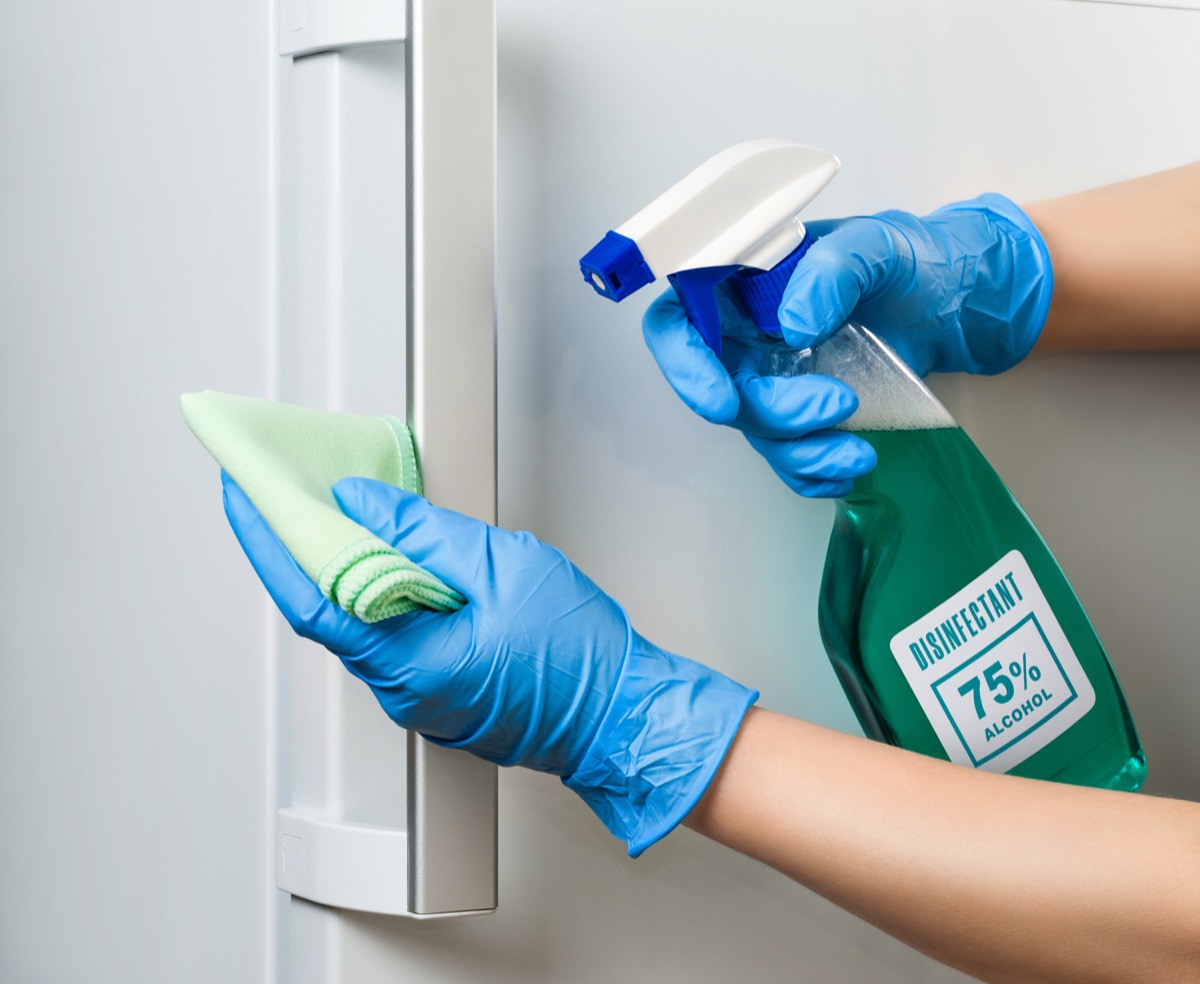
97 CFU per 10 sq. cm
Your fridge may be spotless, but your refrigerator handle is loaded with bacteria. In the NSF study, 23 percent had yeast and mold, 14 percent tested positive for staph, and nine percent were positive for E. coli.
The good news? Cleaning your refrigerator handle is simple: Just spritz it with an antibacterial surface cleanser and you’re good to go.
15
Toilet Handle

107 CFU per 10 sq. cm
It’s probably no surprise that the thing you touch right after using the bathroom is a germ breeding ground. According to the NSF study, 9 percent of toilet handles tested positive for staph and 14 percent had yeast and mold.
To get your toilet handle clean, all you have to do is use a disinfectant wipe to scrub it down before allowing it to air dry. And for more ways you could be ruining your house, check out 21 Ways You’re Damaging Your Home, According to Your Handyman.
14
Microwave Handle
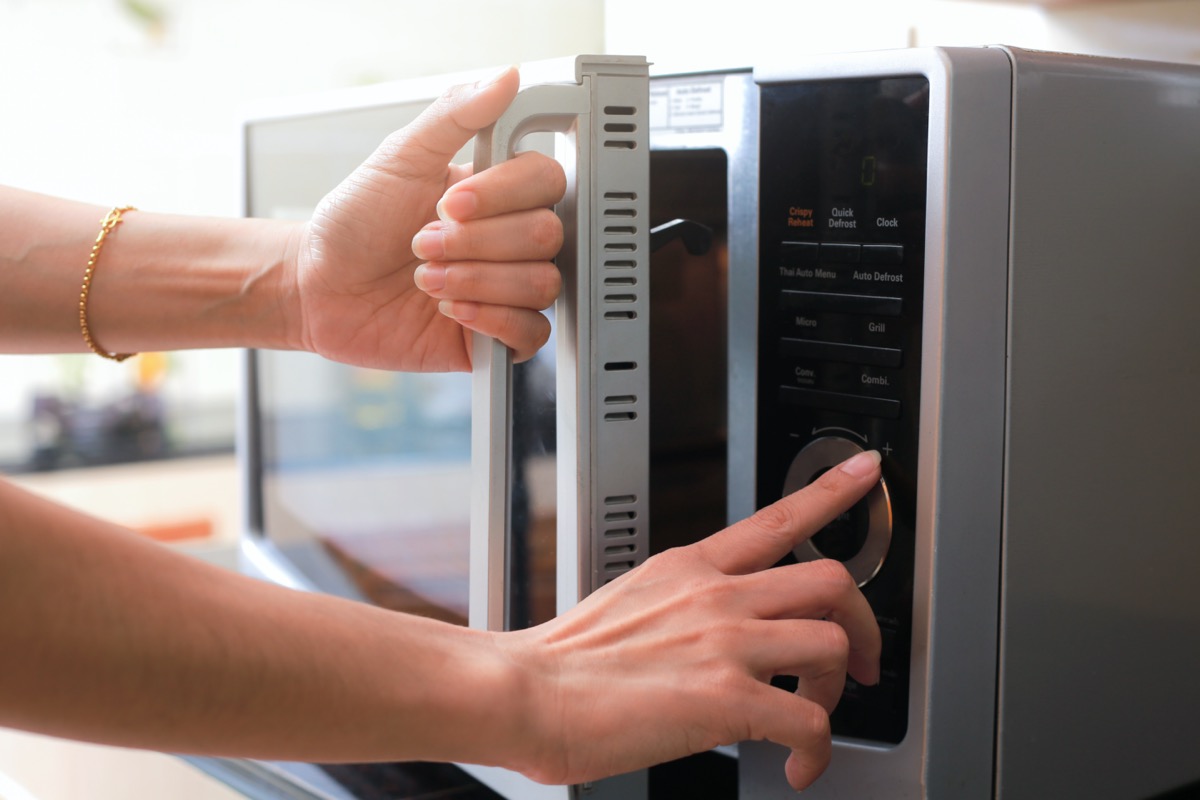
202 CFU per 10 sq. cm
Microwave door handles were similarly loaded with bacteria: five percent tested positive for E. coli, five percent for staph, and five percent for yeast and mold.
Luckily, a bit of antibacterial cleanser, like Lysol or Clorox, can help get rid of those germs in a hurry.
13
Bathroom Light Switch

219 CFU per 10 sq. cm
Bathroom light switches ranked particularly high for yeast and mold contamination in the NSF study, with 23 percent of them bearing traces of one or both. Plus, five percent tested positive for E. coli.
To clean yours, apply antibacterial cleaner to a cloth, cotton swab, or cotton pad and wipe it down—you’ll want to avoid spraying anything directly onto it or any other wiring, which could potentially cause damage.
12
Bathroom Doorknob
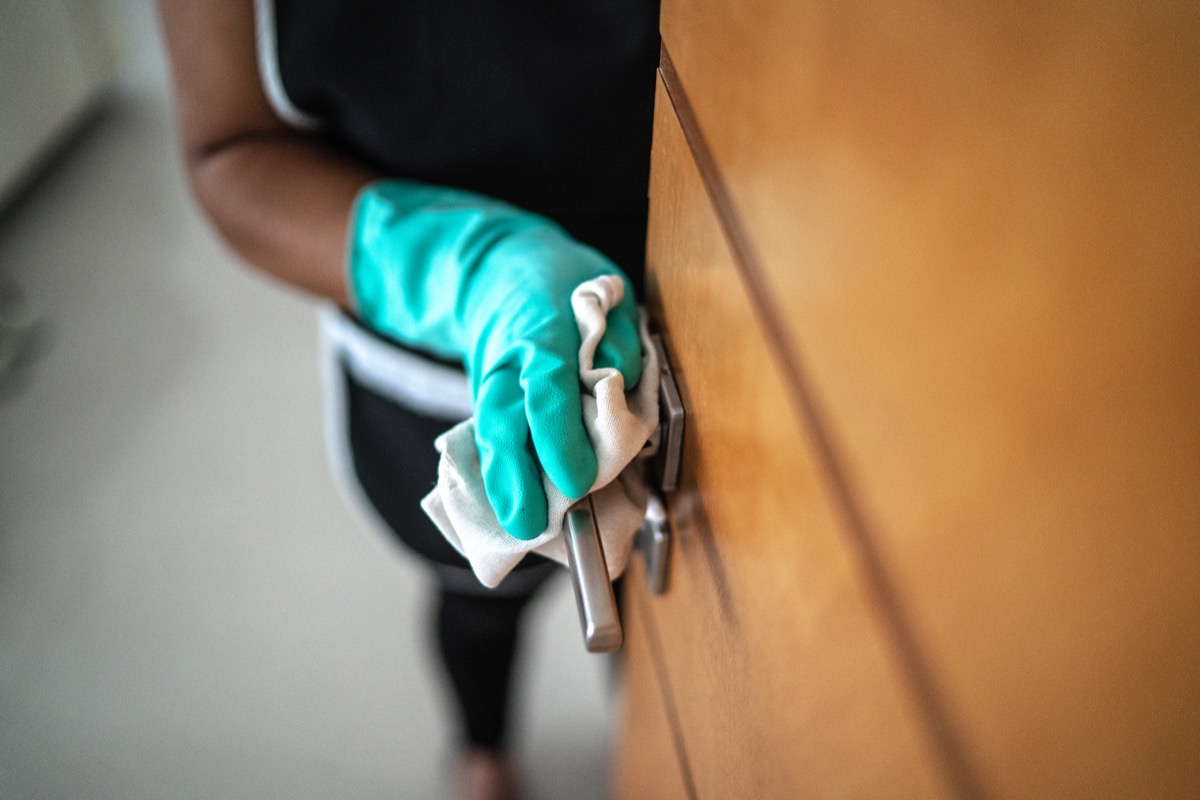
257 CFU per 10 sq. cm
In NSF’s study, 14 percent of bathroom doorknobs were contaminated with yeast and mold, five percent tested positive for staph, and five percent for E. coli.
Fortunately, most metal, glass, and wood door handles can be sanitized with the antibacterial sprays you’re using around the house. And for more helpful tips and tricks for your home, sign up for our daily newsletter.
11
Toilet Seat
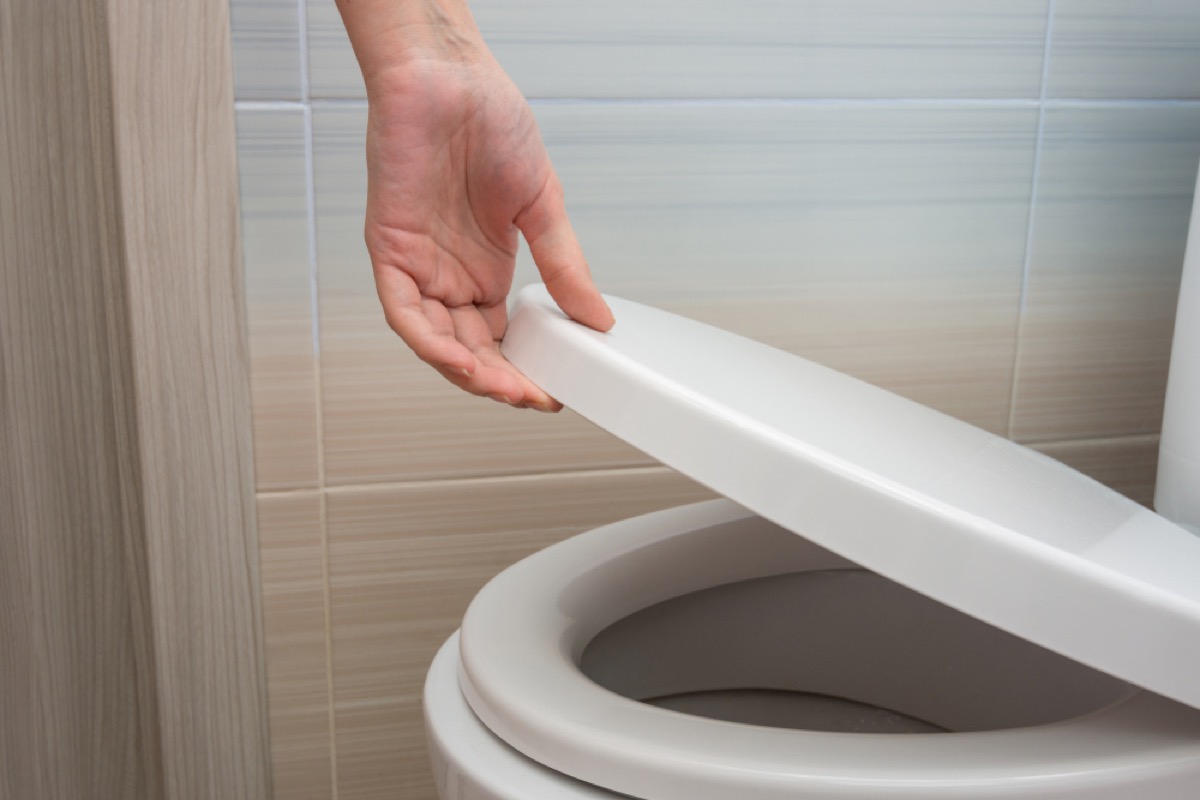
515 CFU per 10 sq. cm
Toilet seats were another not-so-surprising source of germs in the NSF study: five percent tested positive for E. coli, five percent also had remnants of staph, and a disturbing 27 percent contained yeast and mold.
To remedy that, once a week, use a disinfectant spray on both the exterior and interior sides of the toilet seat. After letting it sit for 10 minutes, grab a clean cloth to wipe away any condensation that remains. And for more gross spots in your house, check out These Places in Your Home Are Dirtier Than Your Toilet.
10
Cutting Boards
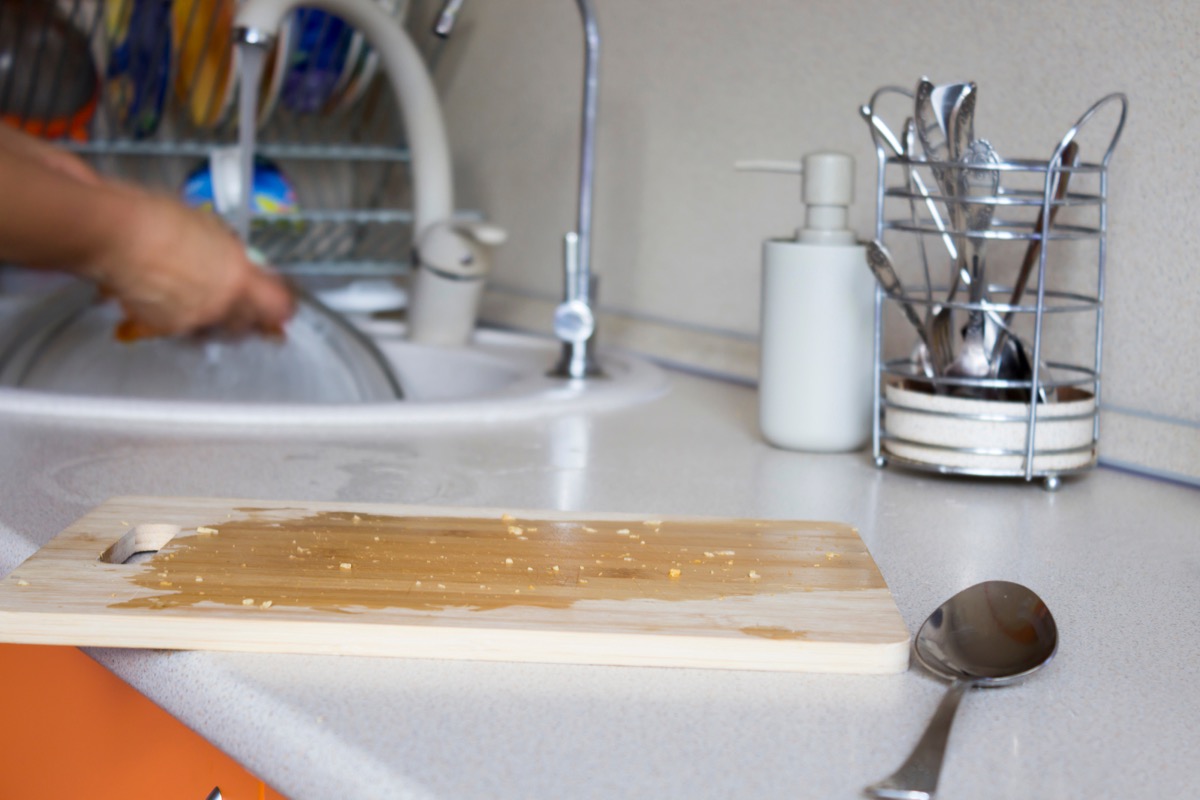
713 CFU per 10 sq. cm
Bad news, home chefs: Your cutting board is likely covered in bacteria. NSF found E. coli on 18 percent of cutting boards studied and yeast and mold on 14 percent.
If your plastic or glass cutting boards are dishwasher safe, feel free to toss them in on a sanitize cycle. If they’re wooden, cleaning company Molly Maid recommends using either white vinegar or three percent hydrogen CFU peroxide to sanitize them. And while you’re sprucing things up, tackle these 20 Things in Your Home You Didn’t Realize You Should Be Cleaning.
9
Stove Knobs
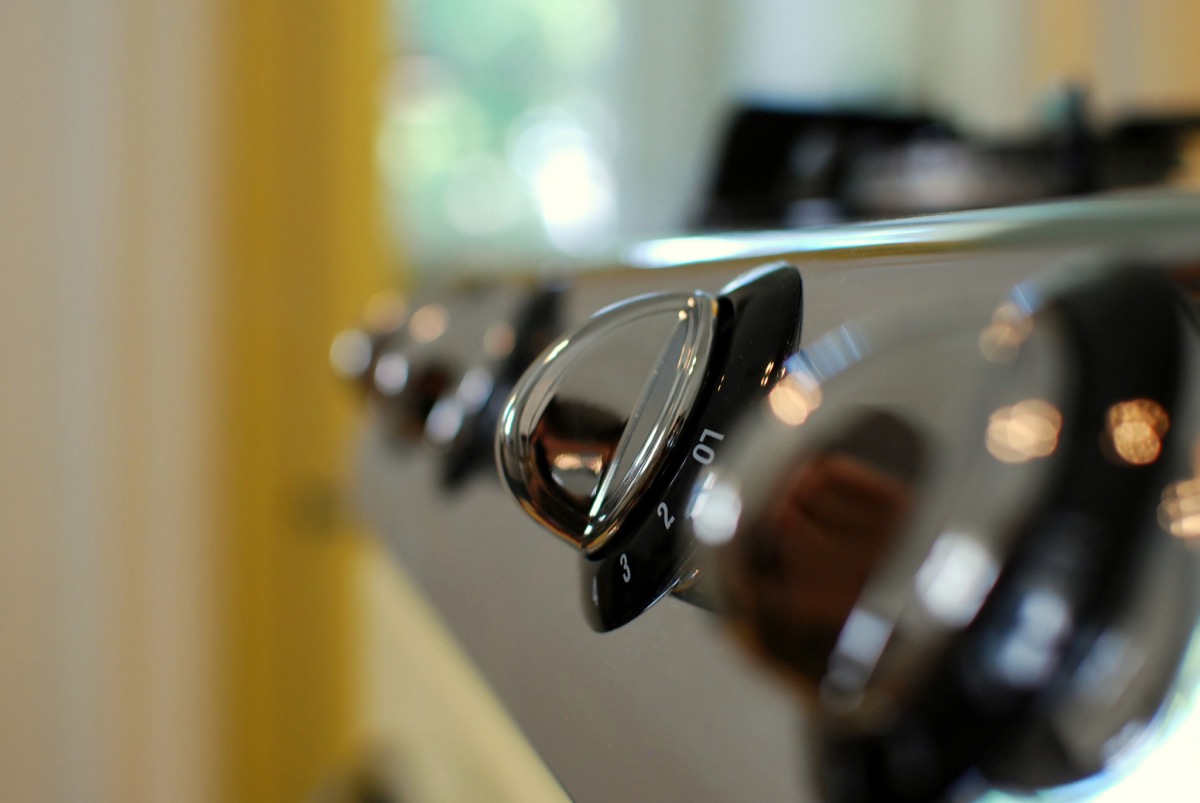
992 CFU per 10 sq. cm
You might want to wipe down those stove knobs before you make your next culinary masterpiece. NSF found that 27 percent of stove knobs were positive for yeast and mold, 14 percent for E. coli, and five percent for staph.
At least cleaning them is easy—just spray on an antibacterial cleaner and allow it to dry as per manufacturer instructions. Make sure you’re also removing the knobs and cleaning their underside and the area where they attach to the stove, where bits of food can get trapped.
8
Kitchen Counters
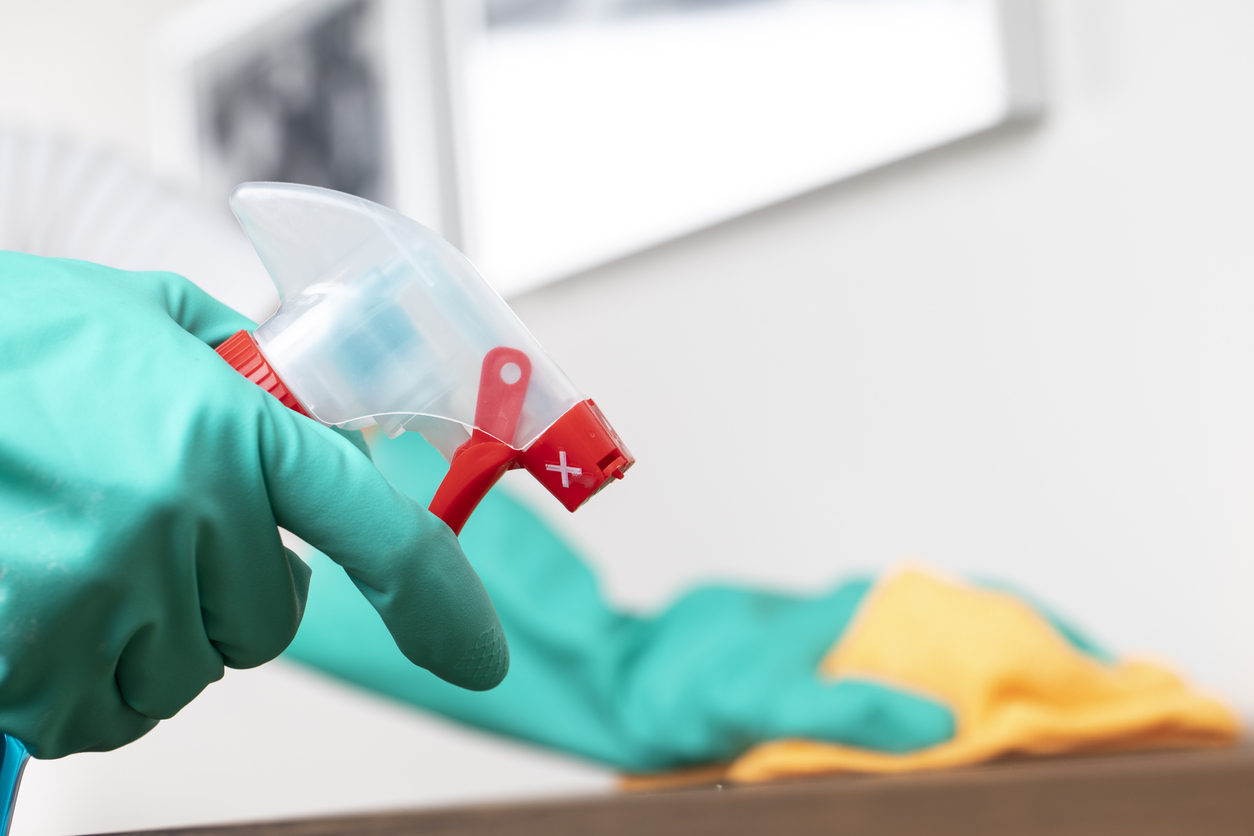
4,590 CFU per 10 sq. cm
While kitchen countertops were the eighth most contaminated surface in homes studied, they were number three when it came to coliform bacteria, with 32 percent of counters bearing traces of E. coli.
Hot water and dish soap can help clean visible debris (and some bacteria) off your counters, but to sterilize them, you’ll want to get a product specifically designed for your type of counters—what’s right for butcher block could ruin your granite, and vice versa. And if you want to refresh your supplies, stock up on these 20 Genius Products That Make Cleaning So Much Easier.
7
Pet Toys
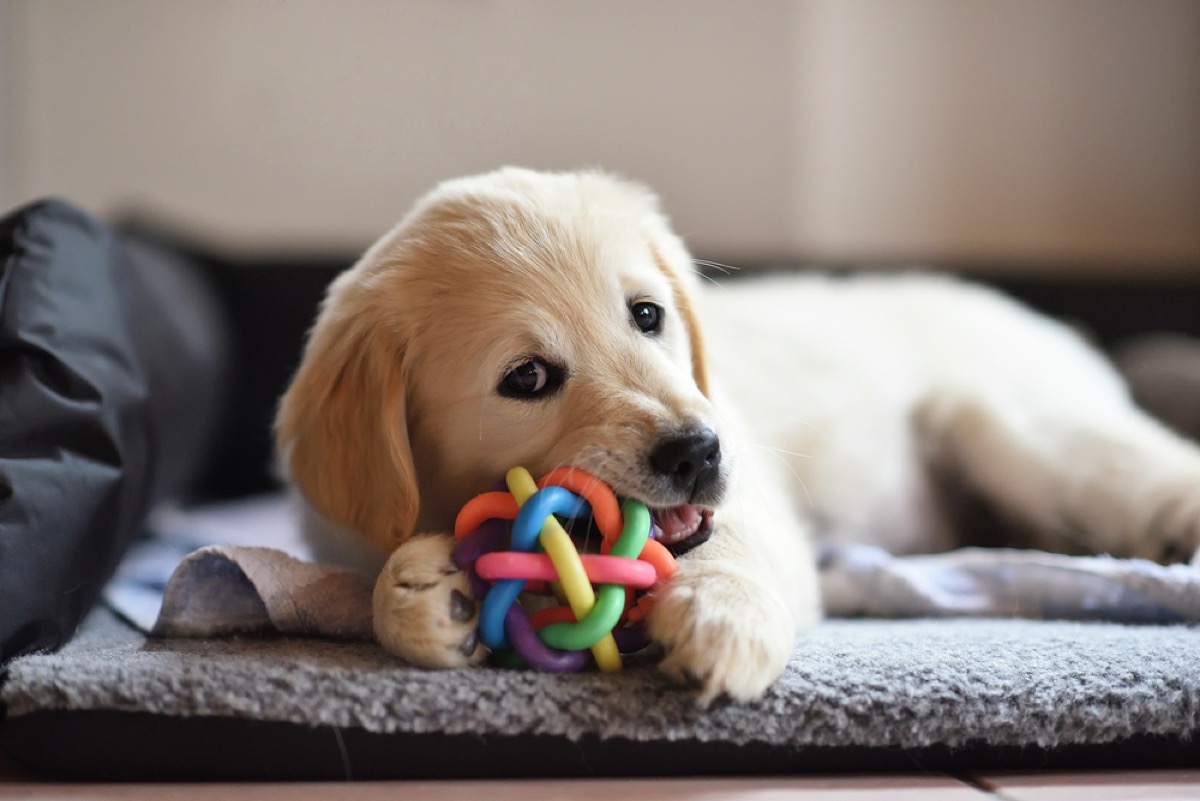
14,121 CFU per 10 sq. cm
That tennis ball Fido’s been carrying around everywhere is anything but clean. NSF found that 57 percent of pet toys were contaminated with yeast and mold, 24 percent with staph, and 14 percent with E. coli.
Tossing soft toys in the washing machine on hot can help rid them of some of that bacteria, while rubber toys can typically be washed in the dishwasher. Just make sure you’re not spraying cleaning products on your pup’s playthings, or you might inadvertently harm them.
6
Bathroom Faucet Handle
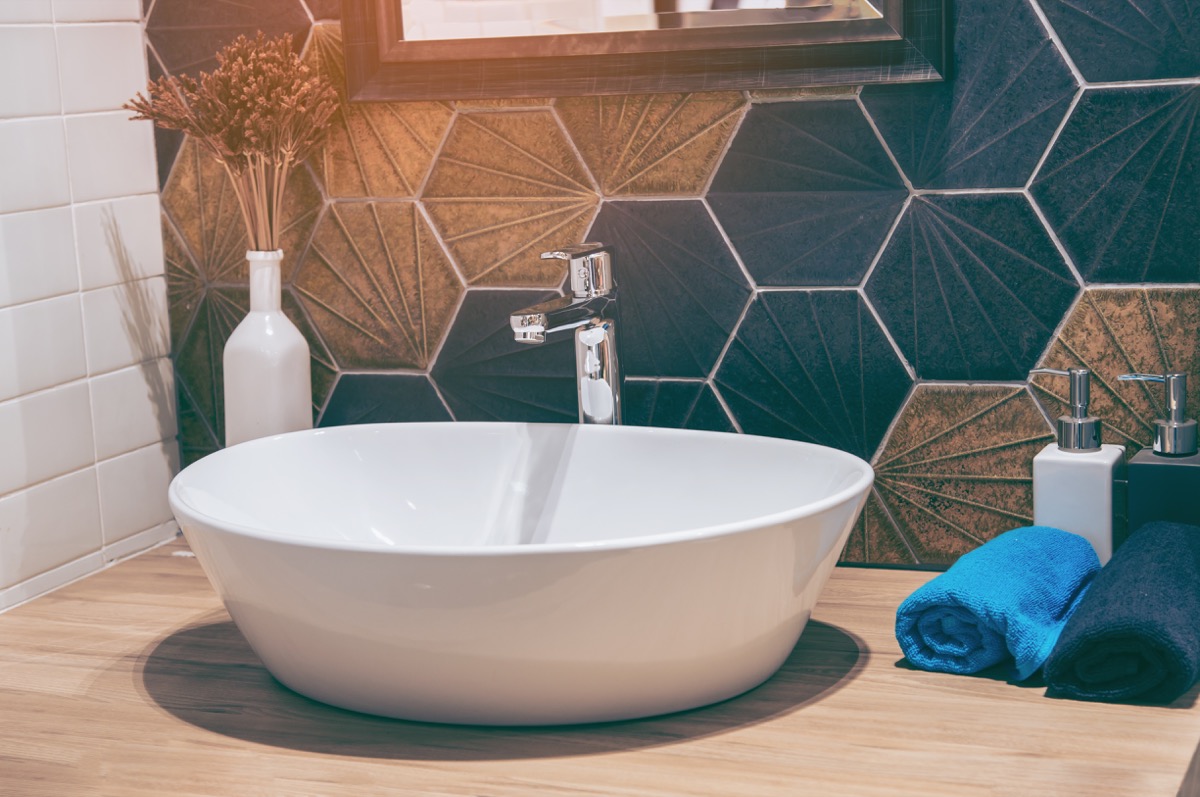
17,976 CFU per 10 sq. cm
If you’re touching it after you use the bathroom, it should come as no great shock that your bathroom faucet handle is covered in bacteria. The NSF study found that 27 percent of bathroom faucet handles were contaminated with yeast and mold, nine percent with E. coli, and five percent with staph.
If you want to clean yours, spraying on an antibacterial bathroom cleanser and allowing it to dry thoroughly should do the trick.
5
Coffee Reservoir
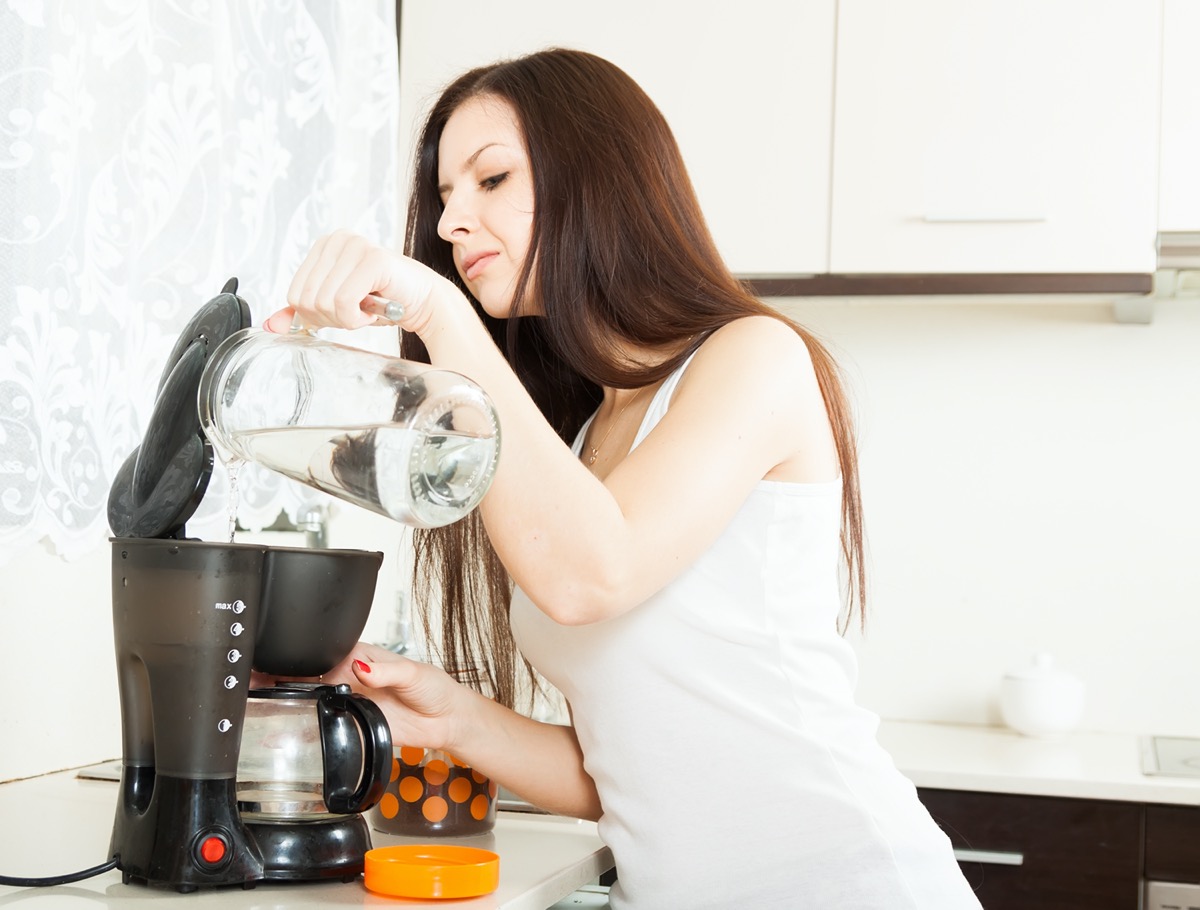
548,270 CFU per 10 sq. cm
You’re likely getting a whole boatload of bacteria with every cup of coffee you drink. According to NSF, 50 percent of household coffee reservoirs contained yeast and mold and nine percent contained E. coli bacteria.
To keep yours clean, do a monthly vinegar rinse through your machine, followed by a hot water wash, and run any dishwasher-safe parts through a high heat wash cycle in your machine.
4
Pet Bowl

1,476,612 CFU per 10 sq. cm
Your pet’s mouth isn’t exactly clean—and neither are their dishes. Pet bowls were the fourth most bacterially contaminated object in homes, per the NSF study, with 45 percent containing mold and yeast, 18 percent containing E. coli, and 14 percent containing staph.
To clean them, wipe up any visible grime with a paper towel or clean cloth and then put them in the dishwasher for a high heat wash.
3
Toothbrush Holder
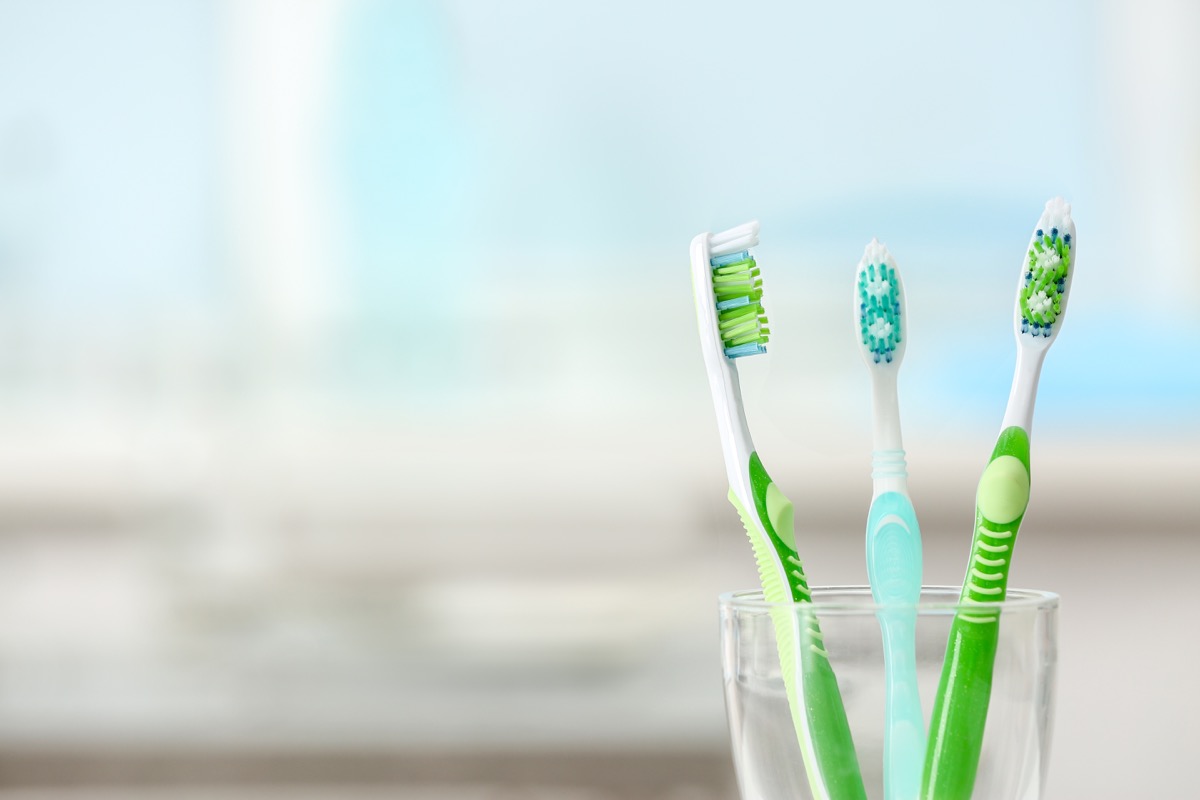
2,465,876 CFU per 10 sq. cm
All that bacteria-laden water left on your wet toothbrush has to go somewhere—and more often than not, that somewhere is the bottom of your toothbrush holder. NSF found that toothbrush holders were the third most contaminated object in the homes studied.
Yeast and mold were found on 64 percent of toothbrush holders, E. coli was present on 27 percent, and staphylococcus aureus was found on 14 percent. To keep that toothbrush holder cleaner, simply wipe it out and pop it in the top rack of your dishwasher for a hot water clean.
2
Kitchen Sink
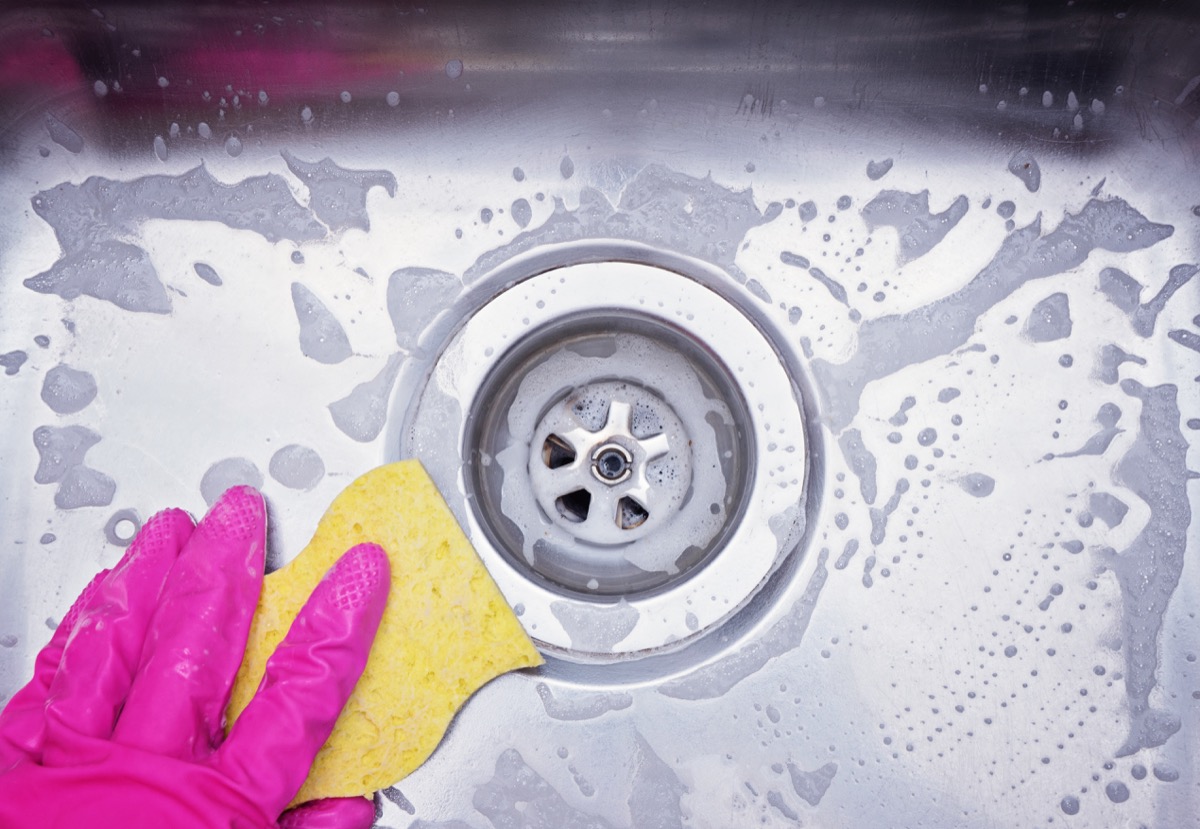
11,381,285 CFU per 10 sq. cm
You wash bacteria off your hands and dishes into the kitchen sink on a regular basis, but when’s the last time you cleaned the sink itself? If you can’t remember, it’s high time you broke out the bleach. According to the NSF study, 45 percent of kitchen sinks studied contained E. coli bacteria, and it was the second germiest household item overall.
If you want to get your sink sparkling and germ-free, simply clean up any visible debris and wipe it with a bleach solution or spray an antibacterial cleaner on it, following the manufacturer’s instructions regarding how long it should remain on the surface before wiping it up.
1
Dish Sponge
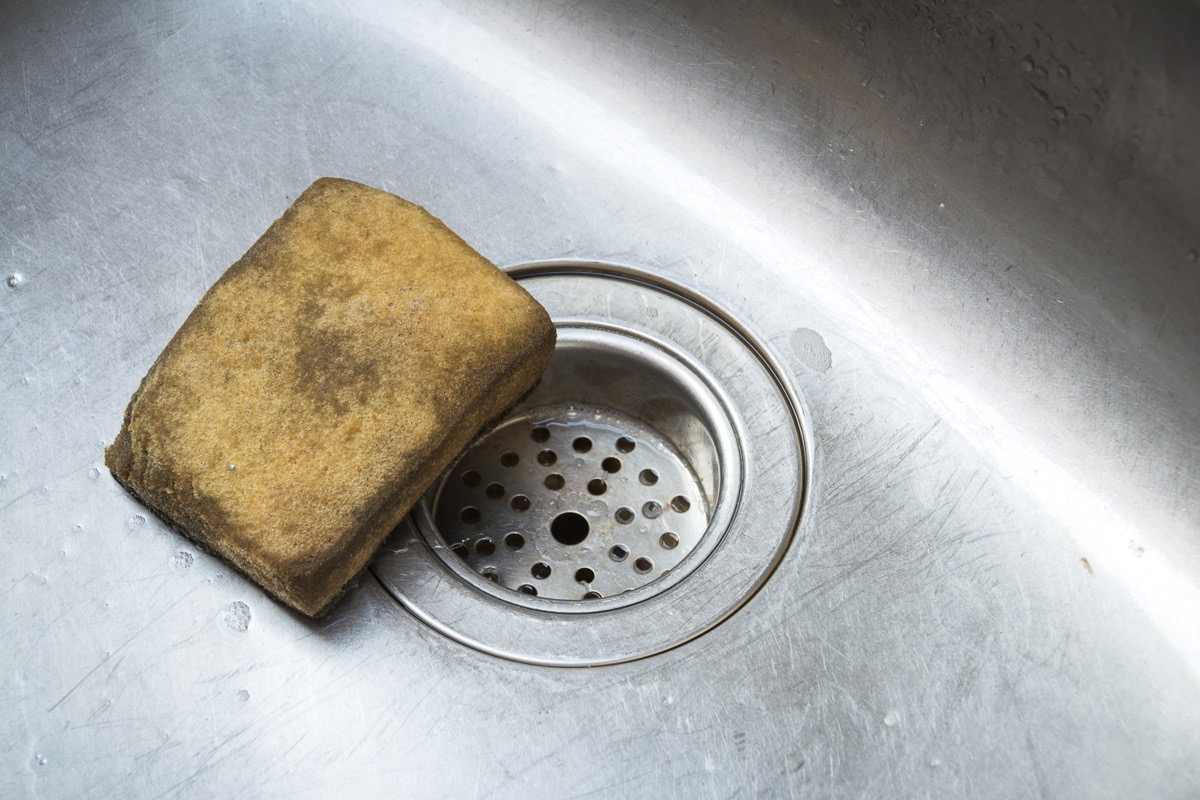
362,631,038 CFU per g
Yes, the very thing you’re using to clean your house may be the dirtiest thing in it. According to the NSF study, coliform bacteria was discovered on over 75 percent of sponges and dish rags found in the homes studies. Yeast and mold were also found on 86 percent of the sponges and rags studied.
In addition to replacing your sponge frequently, University of Furtwangen microbiologist Markus Egert told The New York Times that washing your sponge using bleach and hot water in your washing machine can help kill many of the bacteria on it better than cleaning it in the microwave.